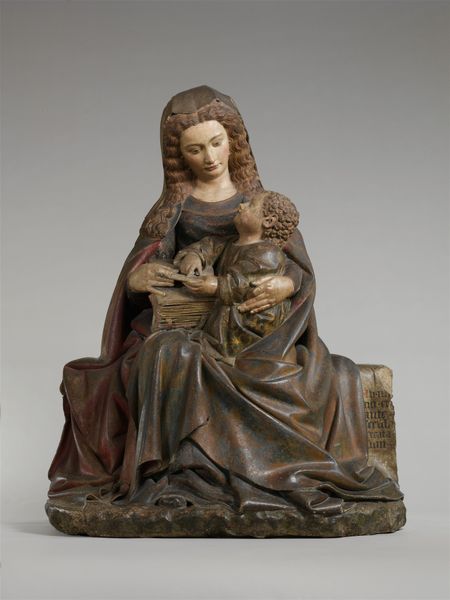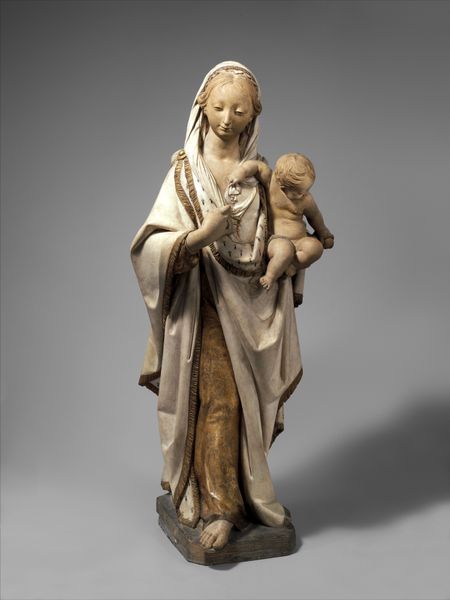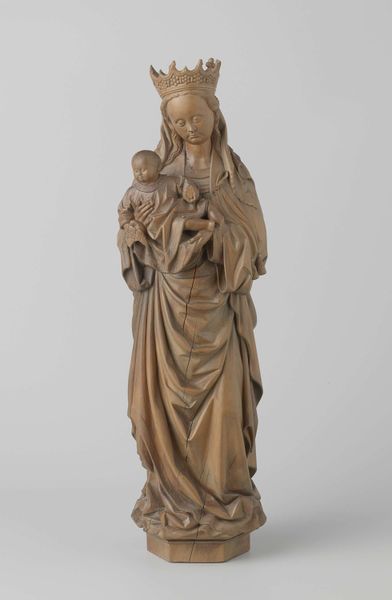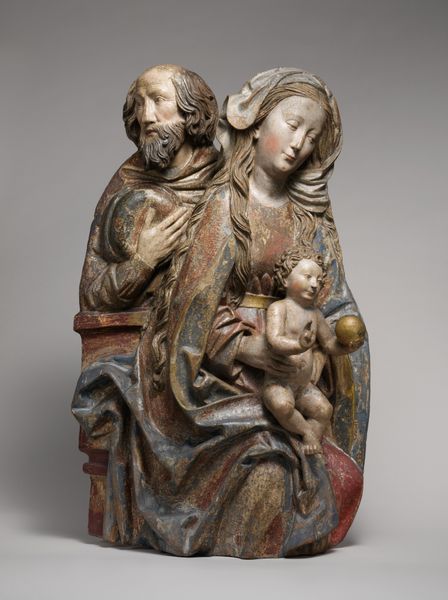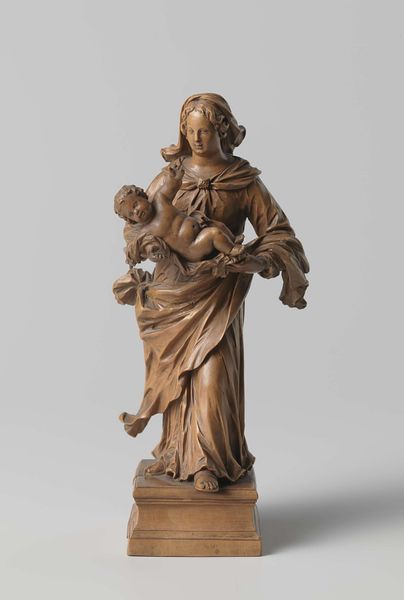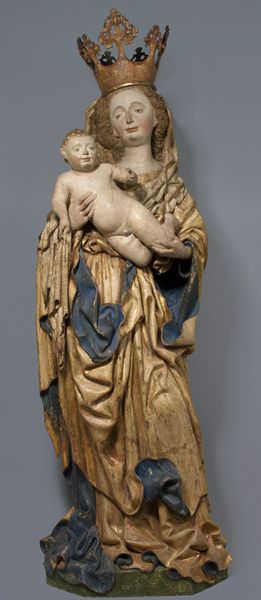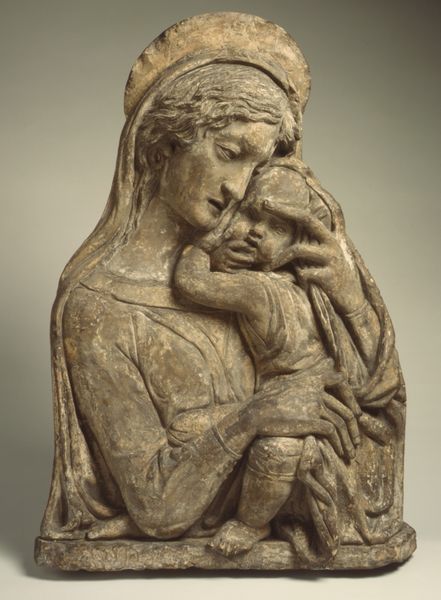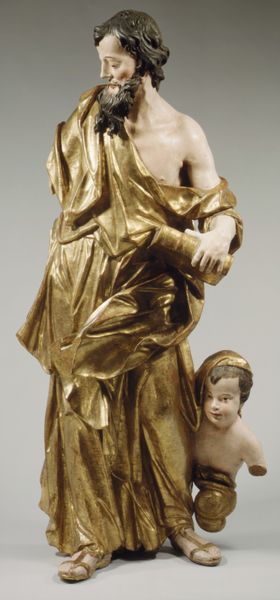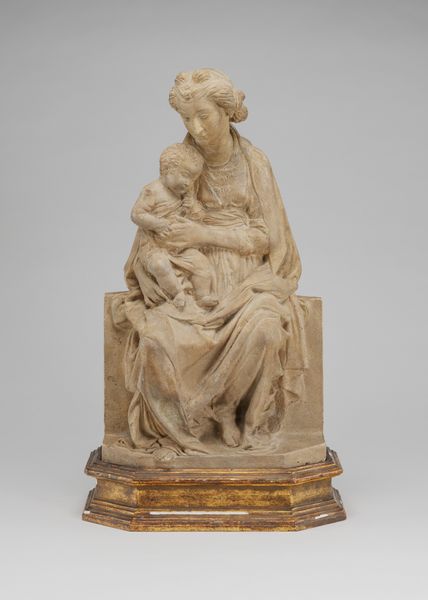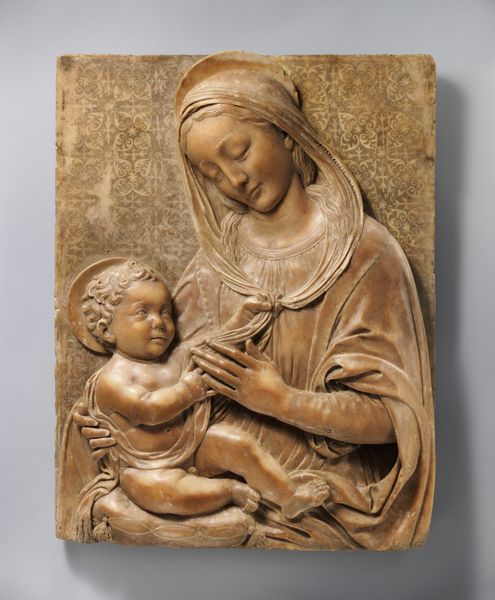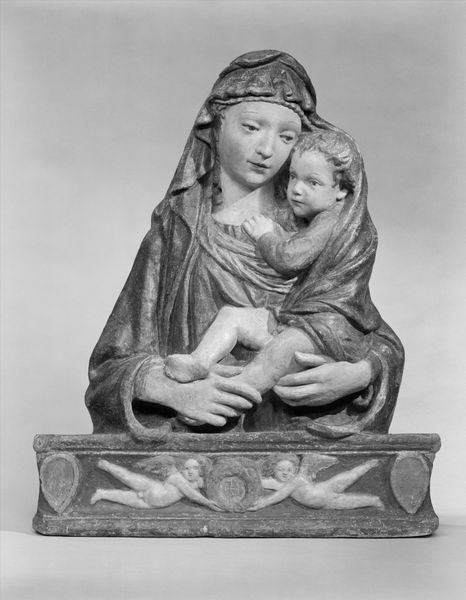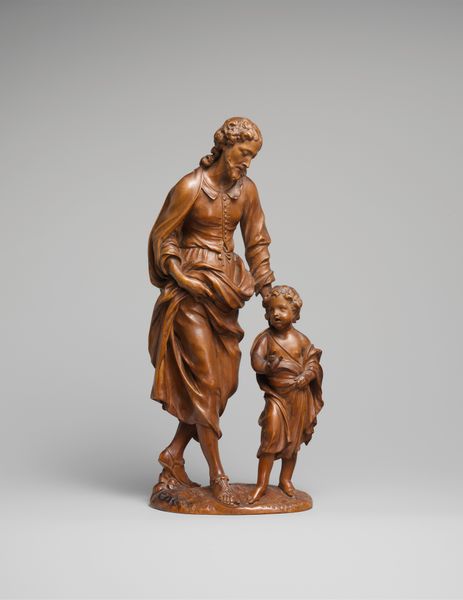
sculpture, wood
#
portrait
#
medieval
#
sculpture
#
figuration
#
sculpture
#
wood
#
northern-renaissance
Dimensions: 31 1/4 x 23 x 16 1/2 in. (79.38 x 58.42 x 41.91 cm) (approx.)
Copyright: Public Domain
Curator: At the Minneapolis Institute of Art, we encounter "Virgin of the Milk," a wooden sculpture created circa 1500 by an anonymous artist. It is a striking, rather weighty figuration. Editor: The Virgin’s gaze is so intense, focused downward on the child. The cascading lines of her hair provide a striking textural contrast to the smooth, almost featureless expanse of her face. And yet, it all conveys a sense of solemnity and perhaps even suffering. Curator: The iconography of the Virgin Lactans, or Virgin of the Milk, extends back centuries, gaining particular prominence in the late Middle Ages. The act of breastfeeding, quite common in medieval iconography, becomes a potent symbol here, referencing not just maternal love, but also Christ’s humanity and the Virgin as the source of divine nourishment for the faithful. Editor: I am compelled by the artist’s handling of volume and surface. The drapery, articulated with such intricate folds and patterns in gold and green, contrasts dramatically with the exposed flesh, the smooth skin, underscoring both the vulnerability of Christ and the protection afforded by his mother. Curator: And her gaze directs the observer’s own attention. The artist is subtly crafting a dialogue between materiality and representation, between divine symbol and human form. There's almost a tactile quality. Editor: What moves me is the shared vulnerability presented here. The act of nursing makes the Virgin seem extraordinarily accessible and human. To me, it invites an incredibly personal and deeply resonant reading that continues even today. Curator: It truly captures how cultural memory persists within a form. Editor: Indeed. It offers not just a subject for analysis, but an opening into the world of maternal emotion and historical piety.
Comments
minneapolisinstituteofart almost 2 years ago
⋮
This medieval sculpture of the Virgin Mary breastfeeding her son is unexpectedly naturalistic for its time. Milk was considered refined blood from the mother’s womb, and images of the Virgin breastfeeding the Christ child had theological significance. It was thought the Virgin’s milk, like the blood of Jesus on the cross, had redemptive properties.
Join the conversation
Join millions of artists and users on Artera today and experience the ultimate creative platform.
